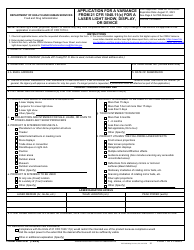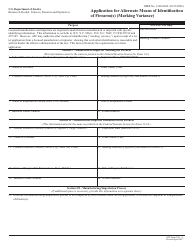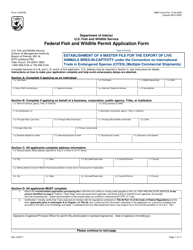Application for a Variance From the Decibel Limits for Commercial Music Establishments - New York City
Application for a Variance From the Decibel Limits for Commercial Music Establishments is a legal document that was released by the New York City Department of Environmental Protection - a government authority operating within New York City.
FAQ
Q: What is a variance from the decibel limits?
A: A variance from the decibel limits is a permission to exceed the allowed noise levels.
Q: What are commercial music establishments?
A: Commercial music establishments are businesses that play music for entertainment purposes, such as bars, clubs, and concert venues.
Q: Why would a commercial music establishment need a variance?
A: A commercial music establishment may need a variance if they anticipate exceeding the decibel limits set by the city.
Q: How can a commercial music establishment apply for a variance?
A: They can apply by submitting an application to the appropriate city department.
Q: What information is required for the variance application?
A: The application typically requires details about the establishment, its operating hours, soundproofing measures, and a noise mitigation plan.
Q: Who reviews and approves the variance applications?
A: The city department responsible for noise control reviews and approves the applications.
Q: Are there any fees associated with the variance application?
A: Yes, there may be fees associated with processing the application.
Q: How long does it take to process a variance application?
A: The processing time can vary, but it generally takes several weeks to review and approve a variance application.
Q: What happens if a commercial music establishment operates without a variance?
A: Operating without a variance may result in penalties, fines, or legal action by the city.
Q: Can a variance application be denied?
A: Yes, a variance application can be denied if it does not meet the requirements or if it is deemed to be a potential nuisance to the surrounding area.
Form Details:
- Released on December 1, 2011;
- The latest edition currently provided by the New York City Department of Environmental Protection;
- Ready to use and print;
- Easy to customize;
- Compatible with most PDF-viewing applications;
- Fill out the form in our online filing application.
Download a fillable version of the form by clicking the link below or browse more documents and templates provided by the New York City Department of Environmental Protection.







